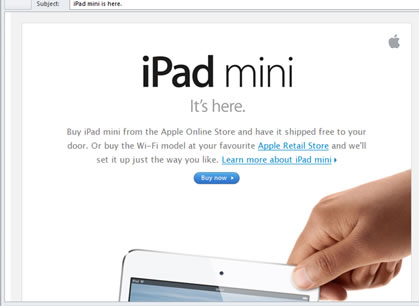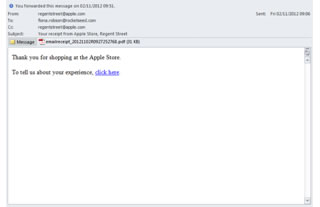
The last DMA email client report reinforced, what all email marketers know, that email is the top revenue producer in the marketing mix. But no email marketer seriously expects every recipient on their database to a) open every mail they send them b) click on every mail they send them and c) buy something every time. Email is also about developing a brand relationship with your customer, ensuring that they are clear about the services you offer, and essentially understand what your brand is about, and build that association with you instead of your competitors.
There is still a lot of truth in the old advertising adage, that we need to see a message at least 7 times before we buy something.- It is by repetition, repetition, and erm – repetition that we remember things. So, as marketers we may be slightly disappointed that not all of our audience open every one of our emails and read our fabulously engaging content, but we can be rightfully proud that each email still contributes to the bigger picture, reinforcing our brand proposition, and helping customers to remember us, when they are ready to spend.
But are marketers fully maximising the branding potential of email? In newsletters, triggered emails and life cycle campaigns – the answer is, mostly, yes. But what about other emails? The lesser-known world of transactional email, for instance? And the seriously under-utilised channel of employee email? Well, here, the answer is a big no, and frankly, marketers should be looking to widen their email radar and get these other branding and revenue opportunities under control and in line with the rest of their activity.
Here’s a scenario for you, to illustrate my point. I’ve just been down to the Regent Street Apple Store this morning to buy an iPad mini. (Yay!)
I had recently received (and opened) a series of lovely “appley” emails, promoting today’s launch.

I’ve also just had the most amazing in-store experience – where the staff “whooped” and “applauded” (yes, literally) as we lucky early-birds entered the building. My transaction was efficiently carried out, receipt sent to me by email, and lovely purchase was put into lovely bag.
What a great and consistent brand experience at every touchpoint.
But now look at the mail that I received from Apple with my receipt when I got back to the office.

Where is my lovely, feel-good appley email, telling me how lucky I am? Or suggesting how much I should enjoy my purchase? Even an apple logo would have been something.
For brands, these “other emails” are important both in terms of not wasting obvious marketing opportunities and also in ensuring consistency of the customer experience. We invest time and effort in creating compelling brand messages for our “push” email campaigns, then when a customer emails us directly, or transacts with us, our neglected outlook replies are still blandly leaving the building, as they have done for years and years.
Did you know that the average employee sends around 15,000 emails a year (yes, each) in the course of their daily work? So, count the employees in your organisation, then add these branding opportunities plus all your transactional emails, and you’ll soon see that his represents a significant customer touch point, and an easy branding opportunity that you are probably missing today.
Marketers need to start wresting control of branding in these emails from the clutches of the IT department and start making them contribute to their branding strategy, and ultimately revenue growth. The world has moved on from the days when the extent of email branding possibilities was to email a logo around the building and ask people to add it to their signature. The power of email to help build brand awareness and engagement is certainly well recognised, but it does apply to all emails, not just marketing emails, and we need to ensure that we have all opportunities on our radar to ensure the customer experience of our brand is consistently delivered in all areas.
